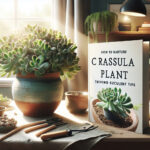Introduction to Crassula
Welcome to the lush world of Crassula, a family of plants that aren’t just easy on the eyes, but also herald wealth and prosperity into your living spaces. This statement piece of greenery, casually known as the ‘Money Plant,’ has been adorning homes and offices with a touch of fortune and a whisper of nature’s magic. But the charm of Crassula extends far beyond its nickname.
Originating from the wide-ranging landscapes of Africa and bearing a history woven into the fabric of many cultures, the Crassula has journeyed far and wide to claim its spot on your windowsill. With an array of species, each with unique, ornamental appeal and a resilience that makes them perfect even for those not so blessed with a green thumb, these plants are a testament to nature’s versatility.
Many a story tells of the Crassula being a harbinger of good luck, and perhaps it’s no coincidence that the plump, jade green leaves resembling coins have led to its association with wealth. Discover the sunshine needs and light tips that keep these succulents thriving, ensuring your home not only looks great but feels vibrant and full of life.
Whether you’re a seasoned gardener or someone just starting their plant parenting journey, the Crassula invites you to craft a relationship with nature, right inside your home. So let’s dig deeper into what makes this plant not just a decorative delight, but a green companion worth investing in.
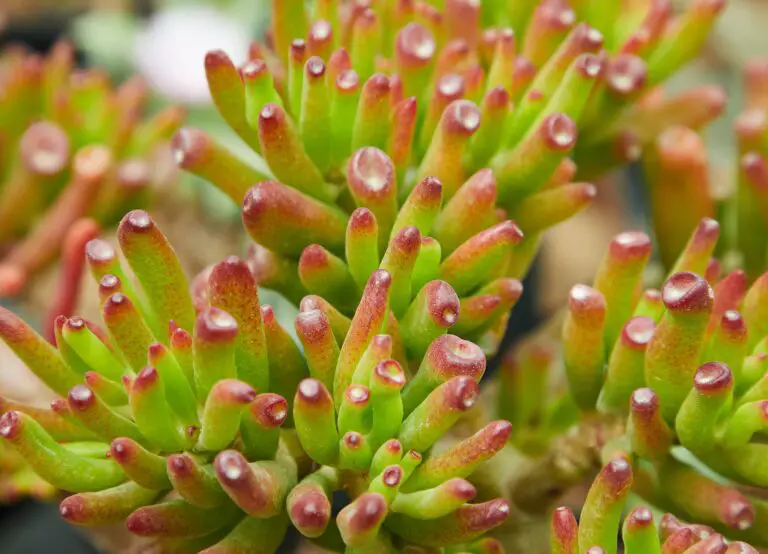
Choosing the Right Environment
Let’s talk real estate – but not the kind you’re thinking. When it comes to crassula plants, or as some like to call them, “money plants,” finding the perfect spot is a game-changer. Much like finding a cozy nook for your favorite armchair, locating just the right environment for your crassula can lead to lush, thriving greenery that’s not only visually pleasing but also a conversational piece. So, let’s dive into the must-haves for setting up the ideal habitat for your green buddy!
Light it Up!
Crassula plants love the spotlight – but not too bright! They’re like that friend who wants to be at the party but avoids the center of the dance floor. These succulents prefer bright, indirect light. Think of a sunny, east-facing windowsill where the morning light gently caresses the leaves. It’s like a slow wake-up call that doesn’t startle but instead warmly invites the plant to start its day.
Stay Cool, Stay Warm – Strike a Balance
Temperature control isn’t just for your comfort; it’s a crassula’s too. They enjoy a mild environment – not too hot, not too cold, just right in the range of approximately 60-75°F (15-24°C). So if your home generally feels like a comfortable spring day, your crassula will fit right in. They do well in typical indoor conditions, making them the perfect companion for your living room or even your quaint home office.
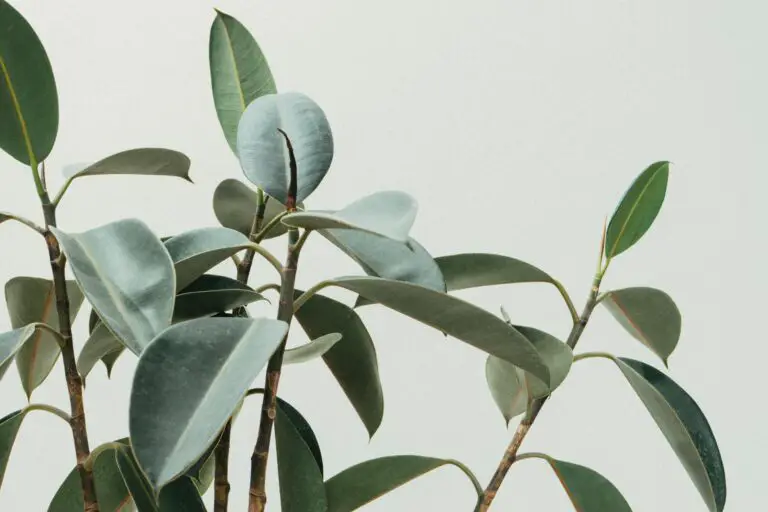
Strategic Placement is Key
The ideal placement doesn’t just come down to aesthetics; it’s about plant health. Localizing these succulents in sites free from drafts, like away from frequently opened windows or air conditioning vents, can save them from an untimely demise. Place your crassula where it can bask in that indirect light mentioned earlier, say on a sturdy bookshelf or atop an eclectic end table, where it can also draw the eye and spark conversations about your green-thumbed prowess.
And there’s more to expanding your crassula knowledge! Learning about its various types and their specific needs can truly cement your status as a seasoned plant parent. With the right balance of light, temperature, and placement, you’re not just maintaining a crassula – you’re curating an environment where it can flourish and perhaps even bring a bit of that ‘money plant’ fortune into your life!
Watering Your Crassula
Thirsty for knowledge on quenching your Crassula’s thirst? Let’s dive right into the watering wonders of nurturing your green buddy. Imagine you’re sipping a cool drink on a sizzling summer day; that’s the refreshing relief you want your Crassula to feel when it’s watered just right.
But be warned: your Crassula is no camel, and treating it like one with excess water could turn your plant from a treasure to a tragedy. Overwatering is the silent assassin of Crassulas, leading to swollen, mushy leaves and a rotten root system. Conversely, allowing your Crassula to become parched leads to a wilted, sorrowful spectacle. Balance is key!

As a rule of thumb, wait for the topsoil to dry out before initiating another watering session. In the heat of summer, you might find your Crassula’s soil drying out quicker, beckoning your watering can once a week. Meanwhile, during the chillier months, your Crassula may only fancy a drink every other week. The best schedule is to observe and respond to your plant, not just mark calendar days.
Remember, using a well-draining soil mix is the unsung hero in the Crassula watering saga. Think of it as the life jacket that keeps your plant afloat, allowing any excess H2O to drain away swiftly.
Need more intel on taking care of your Crassula? Our in-depth guide on sunshine and soil might just be the extra tidbit you need!
So, water wisely, my friends! Treat your Crassula to the hydration it needs, and watch it grow into a monument of green glory within your home—manifesting those Money Plant vibes for all to admire.
Watering Your Crassula
Thirsty for knowledge on quenching your Crassula’s thirst? Let’s dive right into the watering wonders of nurturing your green buddy. Imagine you’re sipping a cool drink on a sizzling summer day; that’s the refreshing relief you want your Crassula to feel when it’s watered just right.
But be warned: your Crassula is no camel, and treating it like one with excess water could turn your plant from a treasure to a tragedy. Overwatering is the silent assassin of Crassulas, leading to swollen, mushy leaves and a rotten root system. Conversely, allowing your Crassula to become parched leads to a wilted, sorrowful spectacle. Balance is key!



As a rule of thumb, wait for the topsoil to dry out before initiating another watering session. In the heat of summer, you might find your Crassula’s soil drying out quicker, beckoning your watering can once a week. Meanwhile, during the chillier months, your Crassula may only fancy a drink every other week. The best schedule is to observe and respond to your plant, not just mark calendar days.
Remember, using a well-draining soil mix is the unsung hero in the Crassula watering saga. Think of it as the life jacket that keeps your plant afloat, allowing any excess H2O to drain away swiftly.
Need more intel on taking care of your Crassula? Our in-depth guide on sunshine and soil might just be the extra tidbit you need!
So, water wisely, my friends! Treat your Crassula to the hydration it needs, and watch it grow into a monument of green glory within your home—manifesting those Money Plant vibes for all to admire.
Soil and Repotting Essentials
Every green thumb knows that the right soil can turn a droopy Crassula into a lush symbol of prosperity. When it comes to these succulent beauties, think of the soil mix as a gourmet meal tailored just for them. You’ll want to aim for a lightweight and well-draining mixture. A blend that’s one part organic matter (such as potting soil or compost) and one part inorganic matter (like perlite, coarse sand, or poultry grit) usually does the trick. It’s like creating a cozy bed of nutrient-rich fluff for your plant’s roots to slumber in!
Remember, the Crassula doesn’t have a big appetite for moisture. With the right soil mix, you bid goodbye to soggy situations that can lead to root rot. Picture a parched desert — that’s the kind of drainage your money plant craves. For a trusted recipe, follow this guide that uncovers the ins and outs of selecting the perfect Crassula soil mix.
Now, let’s talk repotting, a thrilling upgrade for your plant’s living quarters. It’s like moving from a cramped studio to a spacious loft! The best time to repot? Early spring, as the plant wakes up from its winter snooze and gears up for a season of growth. Yearlings may need annual repotting, but as the plant matures, it prefers to be snug in its pot, so you might shift to a biennial schedule.
The repotting process is a delicate dance — here’s how it goes: Start with your new pot, a size up from the old one, and a fresh batch of soil. Gently coax your Crassula out of its current pot, whispering words of encouragement. Tease out the roots lovingly, trim any rogue or rotted ones, and settle it into its new home. Tuck it in with soil, water sparingly, and voilà — you’ve given your plant a new lease on life!
Witness this repotting rite of passage in motion watching this handy , where you can see each step brought to life. Let’s nurture these succulent sensations to ensure they keep turning heads and, dare we say, fattening wallets!
Fertilization and Nutrients
Turn your green thumb into a golden touch with these fertilization secrets for your Crassula plant. Like a master chef knows the best ingredients, you’ll want to treat your Crassula to the crème de la crème of fertilizers to keep those coins—oops, I mean leaves—lush and vibrant.
Finding the Perfect Fertilizer Mix
Not all fertilizers are created equal, and for the Crassula, a balanced meal is key. A stroll down the garden center aisle might have you bewildered by choices, but here’s the cheat code: go for a balanced 10-10-10 fertilizer. This trio of equal parts nitrogen, phosphorus, and potassium is the stuff of dreams for your plant.
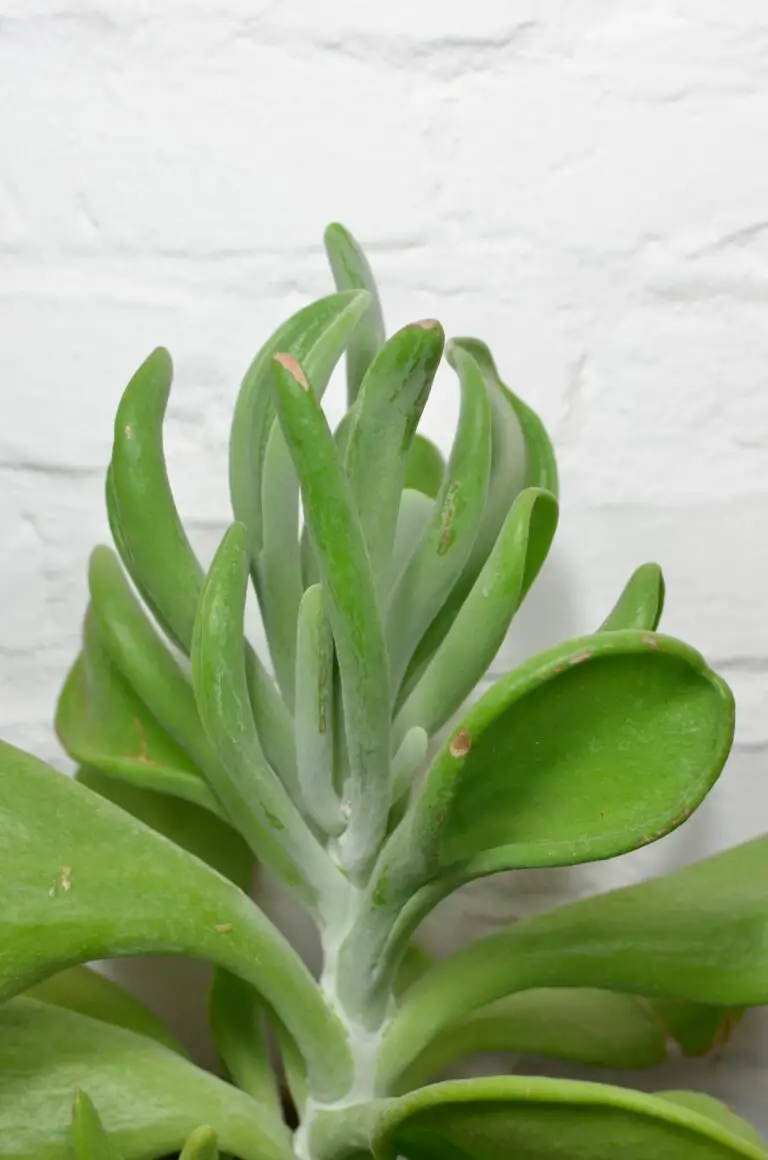

Imagine this: it’s the start of spring, your Crassula is waking up from its winter nap, and it’s famished. That’s your cue to feed it a quarter-strength dilution to kickstart the growth spurt. As summer waltzes in, maintain a schedule of fertilizing once every two months. Remember, moderation is key—you wouldn’t want to indulge your green buddy into a nutrient-induced food coma.
Spotting Signs of a Hangry Plant
Now, let’s talk about when your Crassula gives you the silent treatment. It starts with discolored, wimpy leaves—a sure sign it’s craving nutrients. An owner of a Crassula might tell you about their once-flourishing plant getting all dramatic with dropping leaves and slowed growth. That’s the Crassula’s way of asking for a nutrient boost, stat!
To keep your plant from throwing a fit, check the soil before you reach for that fertilizer bottle. If the topsoil feels like the Sahara—dry and desert-like—then it’s time for a drink and a sprinkle of that nutrient magic. Keep an eye out for your succulent’s needs; they’re more self-sufficient than you’d think. A proactive approach to their nutrition can make all the difference.
Still thirsty for more knowledge on Crassula dining habits? Dive into this guide to growing Crassula and become the ultimate plant whisperer. Your Crassula isn’t just another plant—it’s an investment in good vibes and, with the right care, it’ll pay dividends in lush foliage and zen-like ambiance.
Pruning and Maintenance
Think of pruning your Crassula plant as a bit like crafting its best self – it’s your opportunity to shape not just the plant’s aesthetic but its health and vitality too! Let’s slice into the green world of Crassula care, shall we?
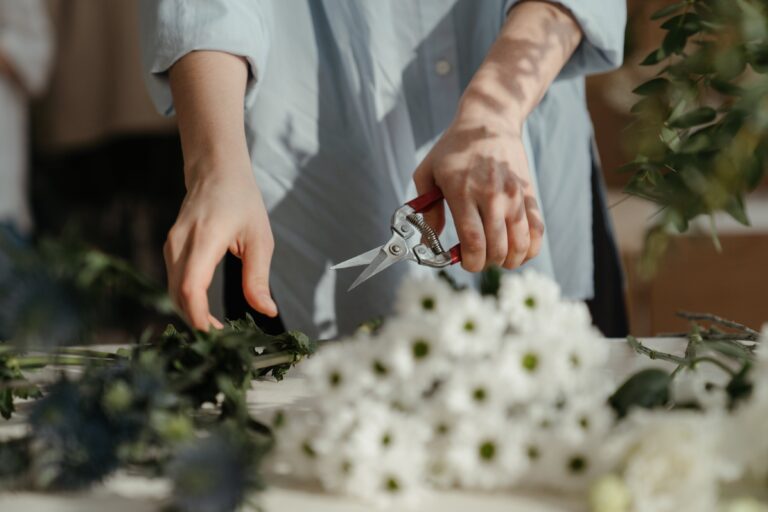

Just like an artist with a vision, you’ll start by assessing your Crassula’s current form. Keep your eyes peeled for any leaves that have become the playground of pests, or those that have simply given their all and are now crispier than a fall leaf underfoot. These are your first cuts. By removing these, you’re not just tidying up; you’re redirecting your plant’s energy to the lusher, promising parts of its verdant self.
Now, consider the plant’s shape. Does it lean more than the Tower of Pisa? Perhaps it’s aspiring to be a green fountain of luscious leaves, but isn’t quite there yet. This is where you, the magnificent plant maestro, step in. Snip snip here, a clip clip there, and voilà! That unwieldy branch thoughtlessly blocking its sibling’s light? Gone! This isn’t just cosmetic; it’s ensuring every leaf gets its place in the sun (quite literally).
But remember, your Crassula isn’t a topiary to be shaped on a whim – it’s a living sculpture in its own right. Encourage its growth by strategically pruning so that the more bashful shoots are coaxed out of the shadows, urging the plant to fill out in a balanced, aesthetically pleasing manner. This is a dance, a collaboration between you and nature.
One real-life example to leaf by: imagine your Crassula is an ambitious ensemble cast in an off-Broadway show. Each part of the plant wants to shine, but if the lead – the main stem – starts hogging the limelight, the understudies – new offshoots and potential bloomers – will wilt in the background. Regular, thoughtful pruning allows every cast member to have their moment, resulting in a show-worthy spectacle in your home.
In a nutshell, pruning your Crassula is about visual harmony, but it’s also about promoting a robust, hearty plant. With each strategic cut, you’re not only shaping its present but also scripting its future growth. So, arm yourself with your best pair of pruning shears and approach your Crassula with the eye of a sculptor and the heart of a gardener. Each cut, a masterstroke, each decision, a step towards nurturing your very own money plant masterpiece.
Pest and Disease Management
Let’s face it, even the sturdy Crassula, with its fleshy leaves that bank on luck and prosperity, isn’t immune to the occasional freeloader or ailment. We want our Crassula to thrive, not just survive, right? So, let’s dive into the nitty-gritty of keeping your green companion happy and healthy.
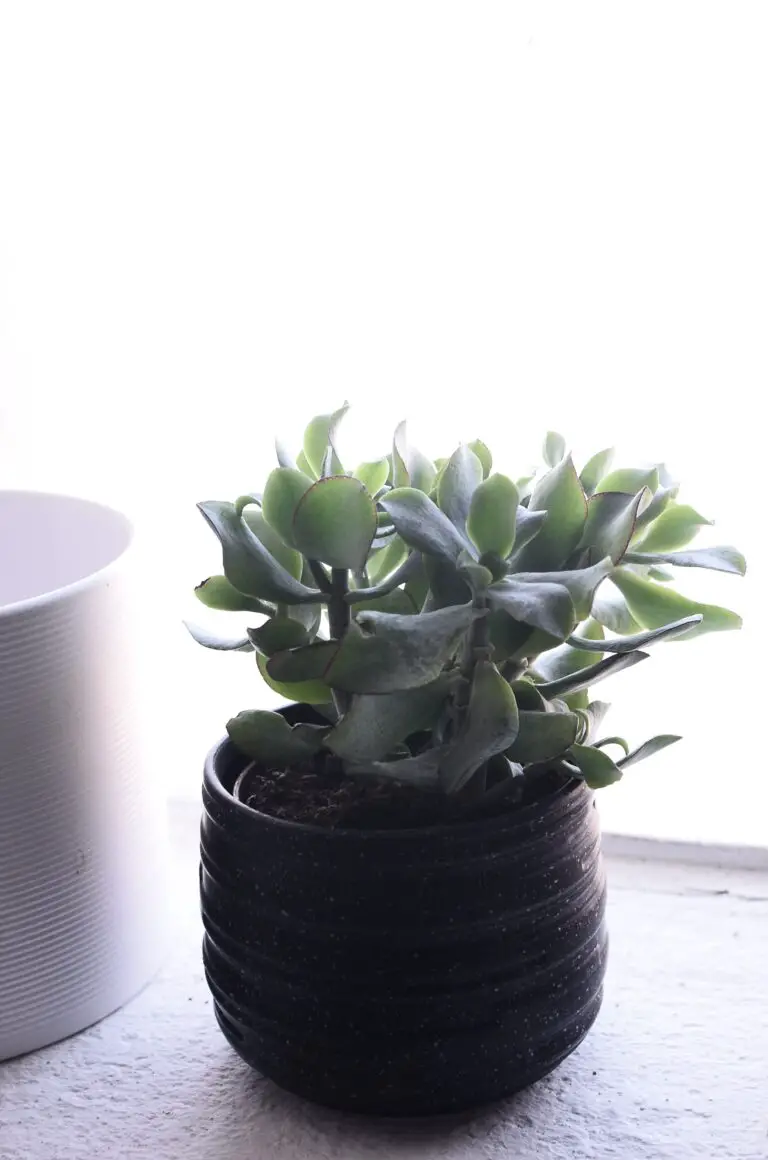

First off, picture this: You’ve got a lush Crassula plant sitting pretty on your windowsill, soaking up that dappled sunlight. But on closer inspection, you spot some uninvited guests. Those aphids and mealybugs didn’t RSVP, did they? They’re sapping your plant’s vigor, and your Crassula is not throwing a welcome party. It’s time to show these critters the door.
Prevention is always better than cure. Keep a keen eye on your plant’s leaves; they’re the first to spill the beans on any pest plot. Regular inspections should be part of your “Crassula Care Craft.” Are the leaves looking a tad spotty or sticky? Could be the calling cards of pests! A soapy water mixture or neem oil spray can be your first line of defense.
Preventive Tactics
A stitch in time saves nine, and in Crassula care, that means quarantining new plants before they join your indoor jungle. It also means maintaining a balanced ecosystem even in your living room. Overwatering and high humidity create a pest paradise. So, aim for that perfect arid climate that Crassula plants adore—a bit like their natural habitat, minus the vast African plains, of course.
Combat Strategies
Now, if your plant is already playing host to these pests, it’s time for some tactical ops. Introducing ladybugs can be a natural and efficient way to clear out those aphids—they’re like the special forces of the insect world. But when things escalate, insecticidal soaps or horticultural oils might be your best bet. Apply with precision; after all, it’s a plant, not a battlefield.
Similar strategies apply to fungal foes like powdery mildew. It’s sneaky and can turn your plant’s lush leaves into a ghostly sight. Increase air circulation around your Crassula, and consider a fungicide if it’s starting to resemble a mini snow-capped mountain rather than a vibrant succulent.
Remember, the key to a flourishing Crassula is vigilant guardianship and an arsenal of gentle, but effective, pest and disease management practices. Roll up your sleeves—it’s time to protect your green investment and keep your Crassula in tip-top shape!
Propagation: Creating New Plants
If you’re smitten with your Crassula and yearn to multiply your green treasures, you’re in luck! Propagating Crassula plants is a straightforward and gratifying process, akin to unlocking the next level in botanical mastery. Let’s dive into the art of creating new plants from your cherished Money Plant.
The Art of Leaf Cuttings
The simplicity of leaf cuttings is beauty in itself. Begin by selecting a healthy, plump leaf from your Crassula. With a gentle twist or snip, detach the leaf, ensuring you have a clean cut to foster regrowth. Place the leaf on a dry surface away from direct sunlight and let it form a callous for a few days; this is essential for preventing rot. Once the edge is calloused, lay the leaf on top of a succulent or cactus mix soil. Then, patience is your virtuous companion. Mist the soil periodically to keep it slightly moist, and soon you’ll witness tiny roots reaching into the soil and a minuscule Crassula plant emerging at the leaf’s base. It’s a magical sight!
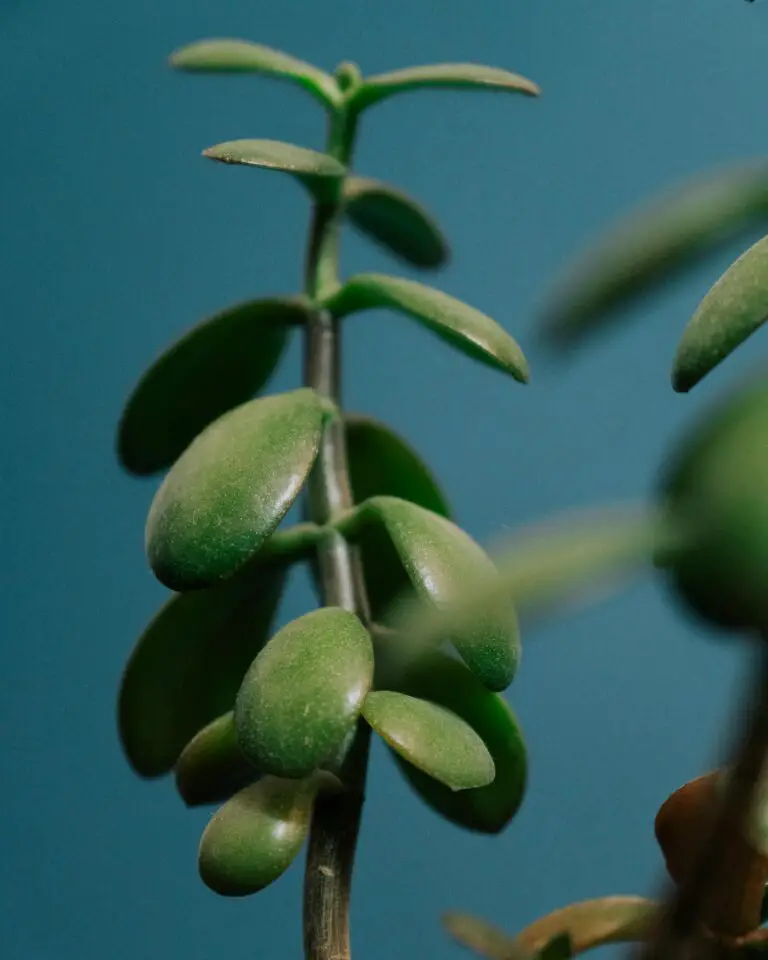

Sprouting New Life with Offsets
Offsets, also known as “pups,” are the small clones that your Crassula produces at its base, seeking to spread its lineage. These can be carefully separated from the mother plant using clean, sharp scissors or a knife. Ensure each offset has some roots attached, and then plant them in their own soil sanctuary. These little ones require minimal water at first. Gradually introduce them to more, and with the right balance of care, they will grow into independent plants. Imagine a pot brimming with Crassula offsets, each with the promise of becoming a robust, coin-carrying charmer.
Real-Life Example: Imagine you’re visiting a friend who has a striking array of Crassula plants adorning their sun-drenched windowsill. You’re captivated by the lush green foliage and express a desire to nurture one of your own. They show you a small dish with several leaf cuttings resting atop the soil, a testament to the ease of Crassula propagation. With their guidance, you select a plump, glossy leaf, and thus your own propagating journey begins. With a simple leaf and a sprinkle of know-how, you’ve embarked on a green-thumbed adventure to cultivate your mini forest of prosperity.
Propagating Crassula is an act of love, a gift that keeps on giving. Whether it’s through the patient nurturing of leaf cuttings or the joyful division of offsets, each new plant becomes a symbol of growth and possibility. There’s a deep satisfaction in watching these tiny life forms take root and flourish, all thanks to your tender care. So, embrace the craft of Crassula propagation and watch your green family thrive!
Troubleshooting Common Crassula Problems
Behold the Crassula, often known as the Money Plant, a beacon of green prosperity in many homes. But sometimes, even the mightiest of Crassulas can encounter hurdles. Have you noticed your Crassula’s leaves dropping like coins in a wishing well? Or perhaps they’ve taken on the look of a crumpled dollar bill with wrinkling surfaces? Discoloration, too, can have your green turning to shades that would worry any plant enthusiast.
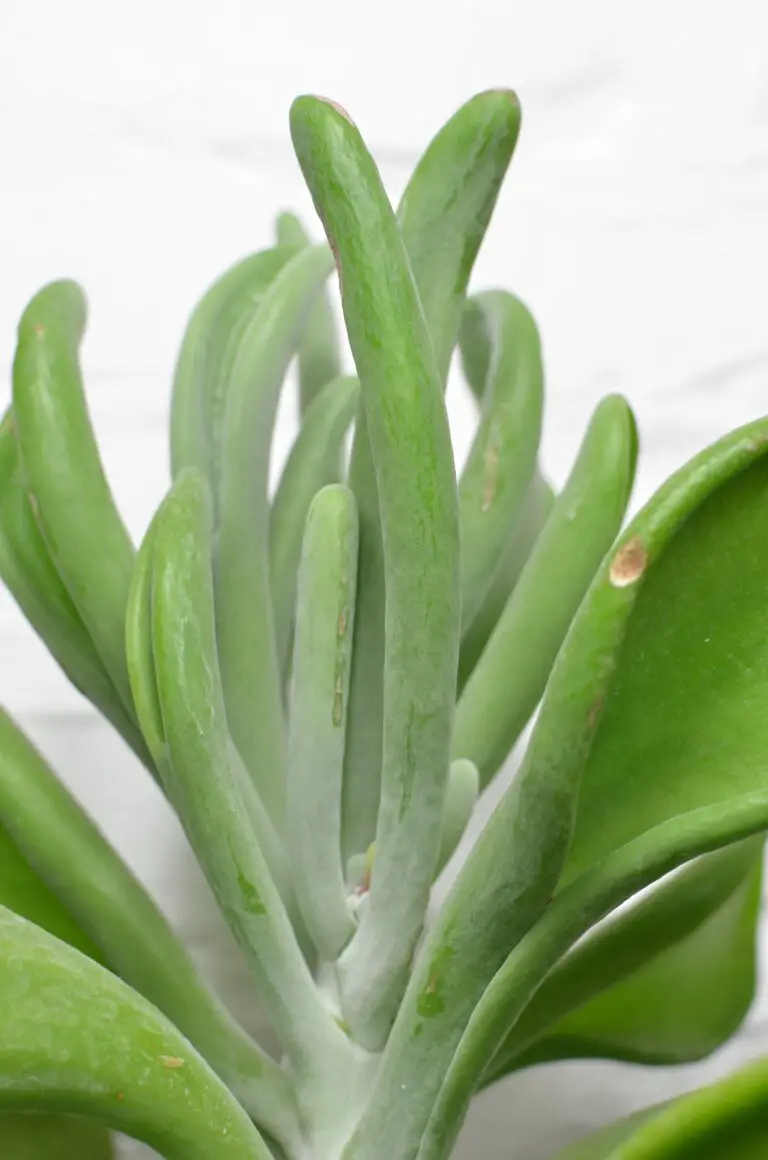

Let’s play plant detective and unravel these mysterious manifestations. Starting with leaf drop, think of it as your Crassula’s way of sending an SOS. More often than not, this is a watering woe. A Crassula, robust as it is, desires equilibrium. Too much aqua, and its roots are drowning in sorrow. Too little, and they’re parched, calling out for a drink. Strike a proper watering balance, and watch those leaves stand firm.
Wrinkled Leaves: A Sign of Thirst
When those plump, jade-like leaves start to look deflated, it’s a textbook case of dehydration. Imagine yourself on a trek in the desert with not a water bottle in sight—that’s your Crassula, longing for hydration. However, saturate it too quickly, and you risk root shock. Gradually reintroduce water to its life, and those leaves will plump up like green balloons ready for the party.
The Discoloration Dilemma
Discoloration can range from a yellow twinge to a worrying brown. It’s the plant’s canvas, telling a tale of its conditions. Bright, sunny spots can bleach its color, much like a beachgoer without sunscreen. Conversely, dim lighting might have it sporting a pale aura, yearning for more lumens. Tune into your Crassula’s needs by finding that perfect spot where the light is just right, making its color pop with vitality.
Embrace these trials and triumphs as part of the Crassula Care Craft. Each problem, a story; each solution, a step closer to mastering the art of nurturing your Money Plant.
“`html
Frequently Asked Questions
Welcome to the greenery gab session where we talk tips, tricks, and leafy trivia for your favorite Crassula, often known as the ‘Money Plant.’ Let’s dive into some common curiosities you may have to keep your Crassula thriving.
How often should I water my Crassula?
Just imagine being in a desert, the habitat where these succulents feel at home. Water is scarce, so your Crassula has adapted to sip slowly. Give it a drink when the soil feels dryer than a conversation about watching paint dry – typically once every two weeks or so. Too much H2O will leave your green buddy less than chipper.
Can Crassula plants survive in low light?
They’re like the introverts of the plant world; they can handle a shadier situation but come alive with a bit of indirect sunlight – think of it as a quiet room with a view. Low light won’t spell doom, but Crassula revels in bright spots where it can soak up those sunbeams without getting a scorching tan.
How do I know if my Crassula is healthy?
A Crassula in its prime will strut its stuff with plump and perky leaves – a true indicator of inner hydration bliss. Colors should look like they’re straight out of a magazine spread, vibrant and lush. If you spot any wilting, discoloration, or the leaves start dropping like flies, it may be sending you an SOS for some TLC.


“`


